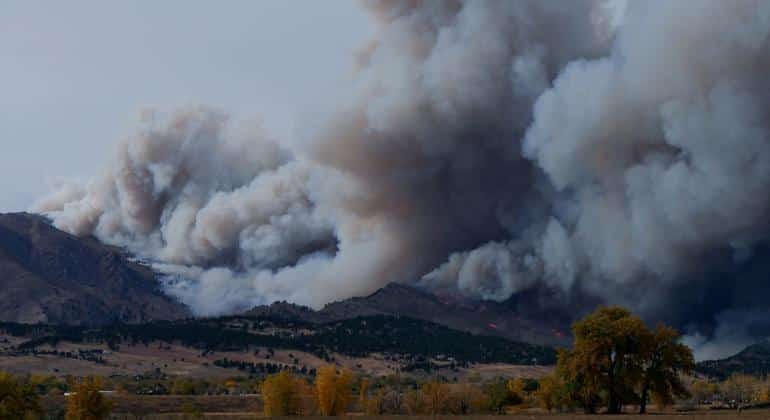The levels of carbon dioxide in the atmosphere reached record highs in 2024, raising alarms about global warming and the intensification of extreme weather events, according to a recent report from the World Meteorological Organization (WMO). This significant increase is attributed to ongoing human activity, an uptick in wildfires, and the decreasing capacity of oceanic and terrestrial sinks to absorb CO₂.
Since the 1960s, the growth of carbon dioxide has tripled, rising from an average annual increase of 0.8 parts per million (ppm) to 2.4 ppm between 2011 and 2020. In 2024, a record increase of 3.5 ppm was recorded, marking the highest level since monitoring began in 1957. Average concentrations reached 423.9 ppm, compared to 377.1 ppm in 2004.
Nearly half of the carbon dioxide emitted remains in the atmosphere, while the rest is absorbed by the ocean and land. However, this absorption process is being compromised by global warming, which affects both the solubility of CO₂ in the oceans and the dryness of various regions, exacerbating conditions such as drought.
The year 2024 has been particularly warm, characterized by a resurgence of wildfires and the influence of the El Niño phenomenon. These events contribute to the rise in CO₂ concentrations, as carbon sinks lose efficiency due to vegetation dryness. The WMO has expressed concern over the reduction in the effectiveness of these sinks, which could lead to higher levels of CO₂ in the atmosphere and, therefore, accelerate global warming.
In addition to CO₂, other greenhouse gases such as methane and nitrous oxide have reached historic levels. In particular, methane levels surged to 1942 ppb, 166% above pre-industrial levels. Meanwhile, nitrous oxide reached 338 ppb, a 25% increase.
The WMO’s Deputy Secretary-General emphasized the urgent need to reduce greenhouse gas emissions, noting that these actions are vital not only for climate reasons but also to safeguard the economy and the well-being of communities. The report comes at a critical moment, just months before the COP30 climate conference set to take place in Belém, Brazil, reiterating the importance of continuous global monitoring to guide future climate actions.
Source: MiMub in Spanish











